Home was important to Azzedine Alaïa – the late, great Tunisian-born, Paris-based, but globally influential fashion designer, who passed away in November. His couture maison in Paris’ Marais encompassed both interpretations of that word – it was the basis of his fashion operation, the Maison Alaïa in the terminology of the trade; but it was also where Azzedine himself lived. It was a house, and a home. The same sense has been true of Alaïa’s retail outposts, few though they are. Until the early 1990s, he had stores in Los Angeles – “The most successful,” stated Carla Sozzani, Alaïa’s friend, confidante and business partner – and New York, the latter managed by Jacqueline Schnabel, wife of Julian, on Mercer Street, the clothes hanging on Brutalist bronze rails sculpted by the artist. After its closure in 1991 those fixtures – and a sculptural bronze table, like an altar emblazoned with the letters ‘AA’ – came to Paris, to Alaïa’s flagship boutique hunkered under the designers’ own atelier at 7 Rue de Moussy. The space is idiosyncratic: sometimes requisitioned as a dining room for dinners too expansive for Alaïa’s kitchen table; sometimes used as the backstage for his fashion shows (always shown in-house). In 2006, the designer Marc Newson devised a space-age, ergonomic marble annex to showcase Alaïa shoes, built to one side of the main store.

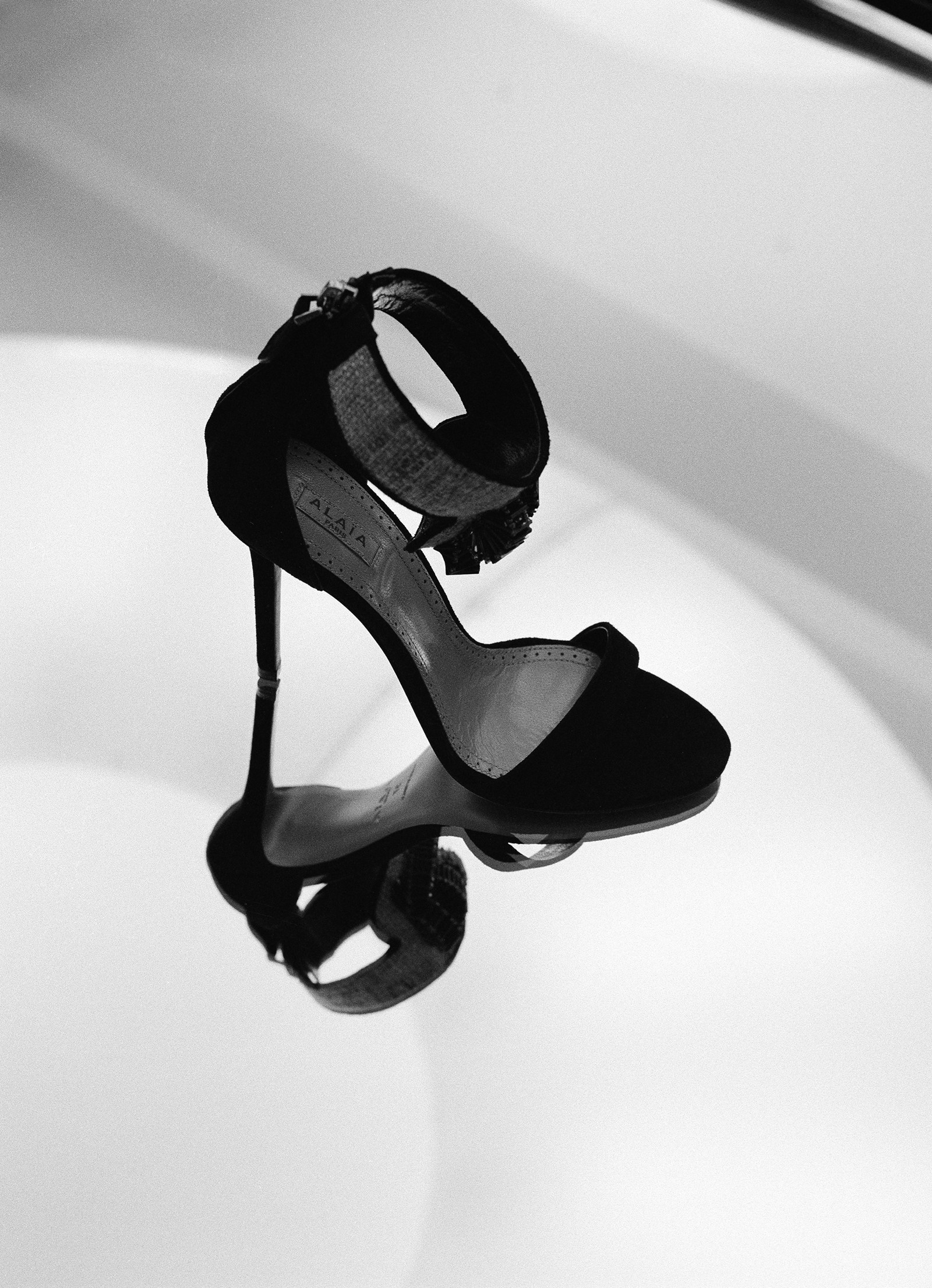
The other side of that space is Alaïa’s tiny hotel – three apartments, furnished with pieces from his own collection of modern furniture classics like a micro-museum of design greats – more Newson, alongside Arne Jacobsen, Charlotte Perriand and Jean Prouvé. Alaïa himself slept inside a glass and metal Prouvé petrol-station, painstakingly erected inside his own apartments high in the building. And when planning the latest ventures for his labels – a major exhibition at London’s Design Museum, and the opening of a 6,000 square foot, three-level store on Bond Street in the same city – Alaïa married his love of fashion and industrial design, creating a seamless fusion between his aesthetic and those of the practitioners he admired. Alaïa had an immense respect for other fashion talents – of the past, Madeleine Vionnet, Alix Grès, Cristóbal Balenciaga and Charles James; and in the present talent as diverse as Rei Kawakubo, Yohji Yamamoto, Raf Simons and Nicolas Ghesquière. But Alaïa himself pointedly only wore black cotton pyjamas (he had a pair made especially for him by Kawakubo), and stated that fashion for men didn’t interest him. His love of fashion was as a creator, and as an aesthete, not as a wearer. His love of design, however, was something he lived with, something he used everyday.
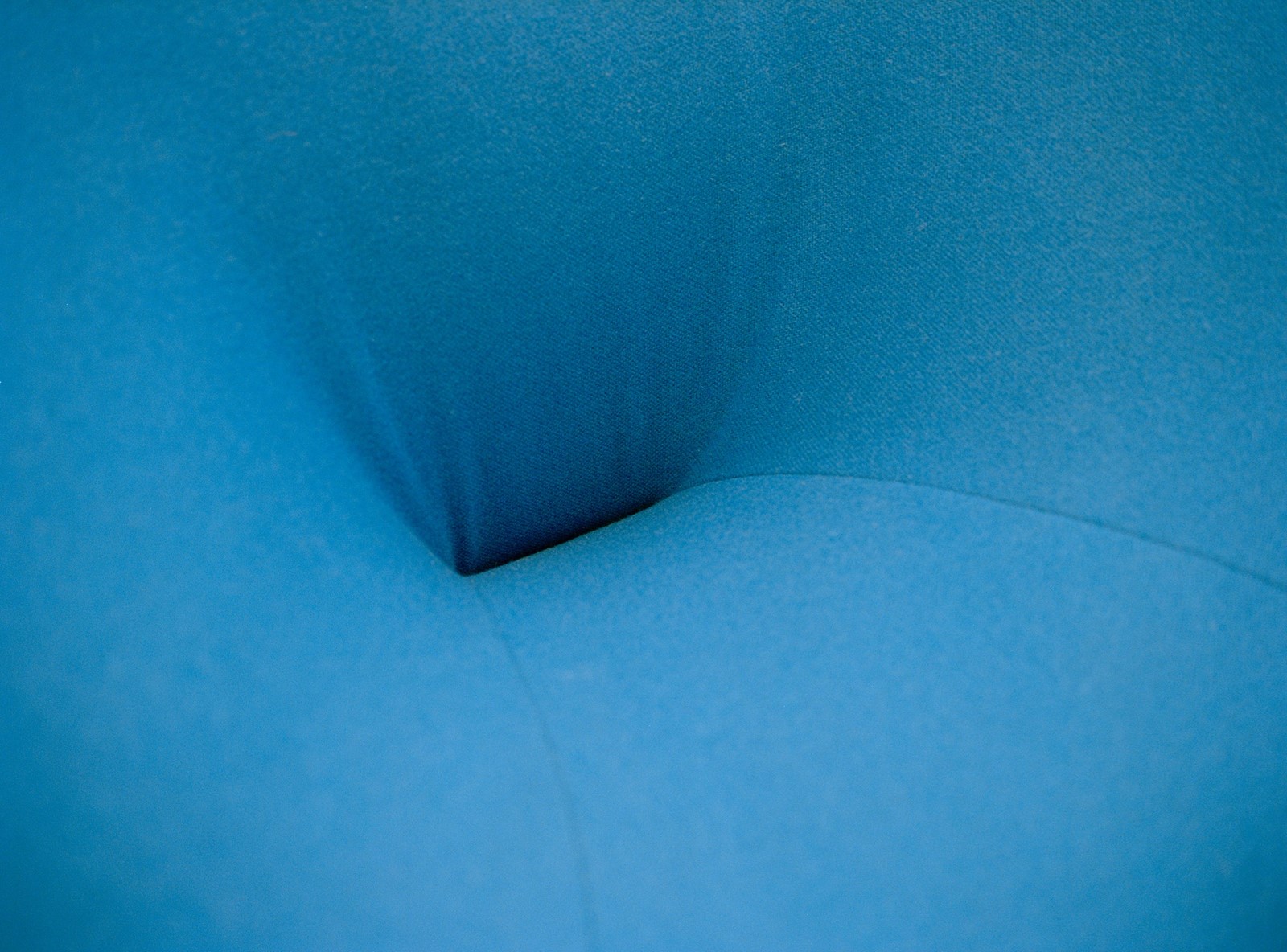
It also directly synced with and influenced Alaïa’s approach to fashion. Take Prouvé: the designer and engineer’s elevation of raw sheet metal is akin to Alaïa’s use of leather – both comparatively humble materials, neither conventionally used in high design in their respective fields, but handled with skill and dexterity to create something extraordinary. Alaïa’s groundbreaking leather coats of the 1980s, for instance, tailored with the precision of wool and cut with the fluidity of silk, detailed with utilitarian and industrial metal eyelets, clasps and zips, transformed our perception of the material as a whole.
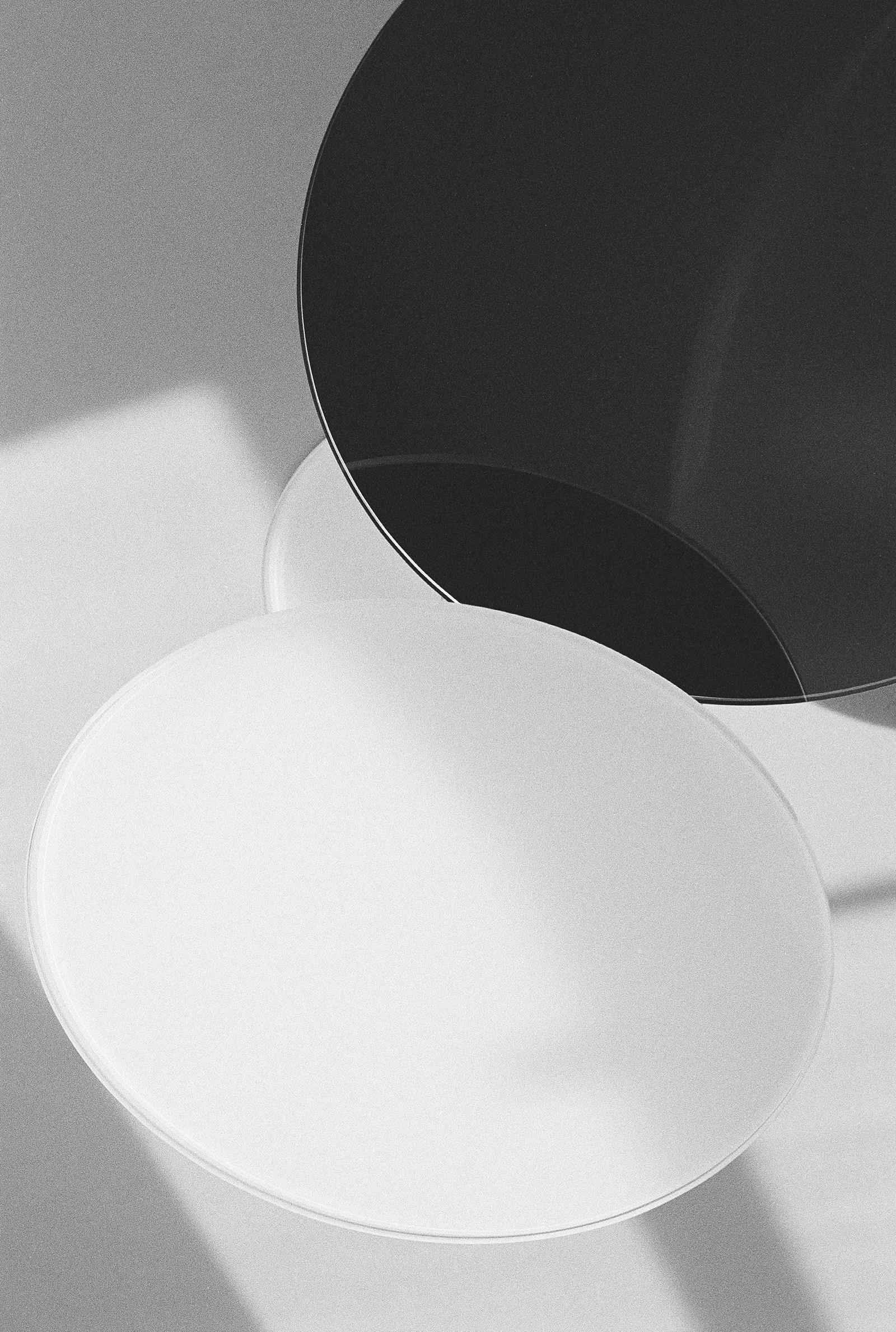
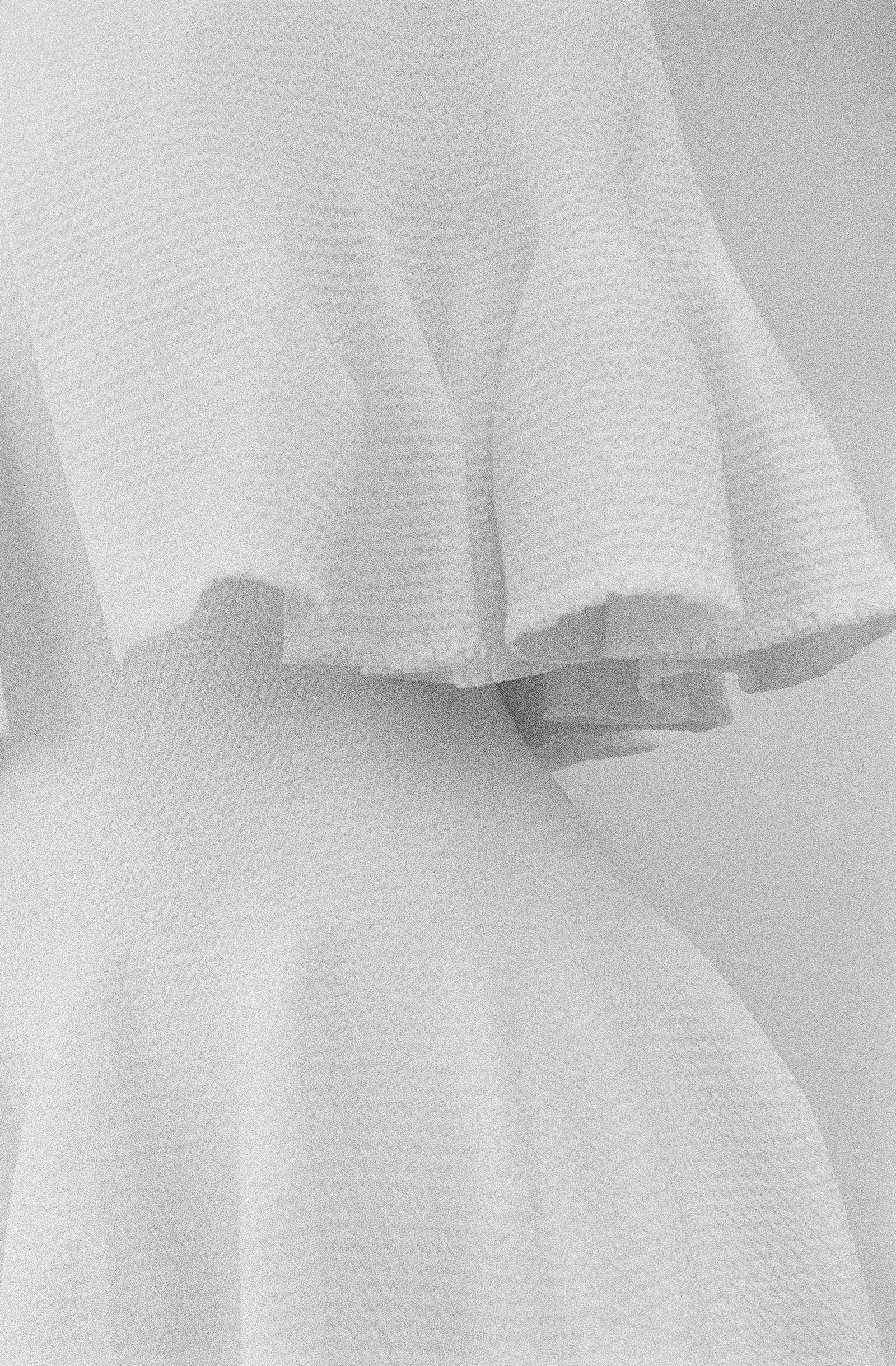
Alaïa died in November, so it is Sozzani – a woman he called ‘sister’ – who walks through the space, to greet and explain the intention. A handsome woman who looks more than a little like an Italian Renaissance portrait with her hair pulled back with a slender velvet bow, she is dressed in Alaïa, but flowing trousers and a gently flared tunic top, the alternative to Alaïa’s suctioned-in signature curves, and one beloved by equal numbers of women. The Alaïa store location was only chosen a year before its opening, in April 2017. Alaïa himself adored it, she said, because it is positioned opposite the auction house Sotheby’s in a building formerly occupied by S.J. Phillips, a dealer in antique jewellery and silver. “It feels like a Maison,” she comments of the high-ceilinged rooms flooded with light, occupying an entire building on Bond Street. Changes were minimal – the structure itself was stripped back to the bare bones, literally exposing the brick on the second floor. “We cleaned it a little,” Sozzani commented. “But that’s it.”
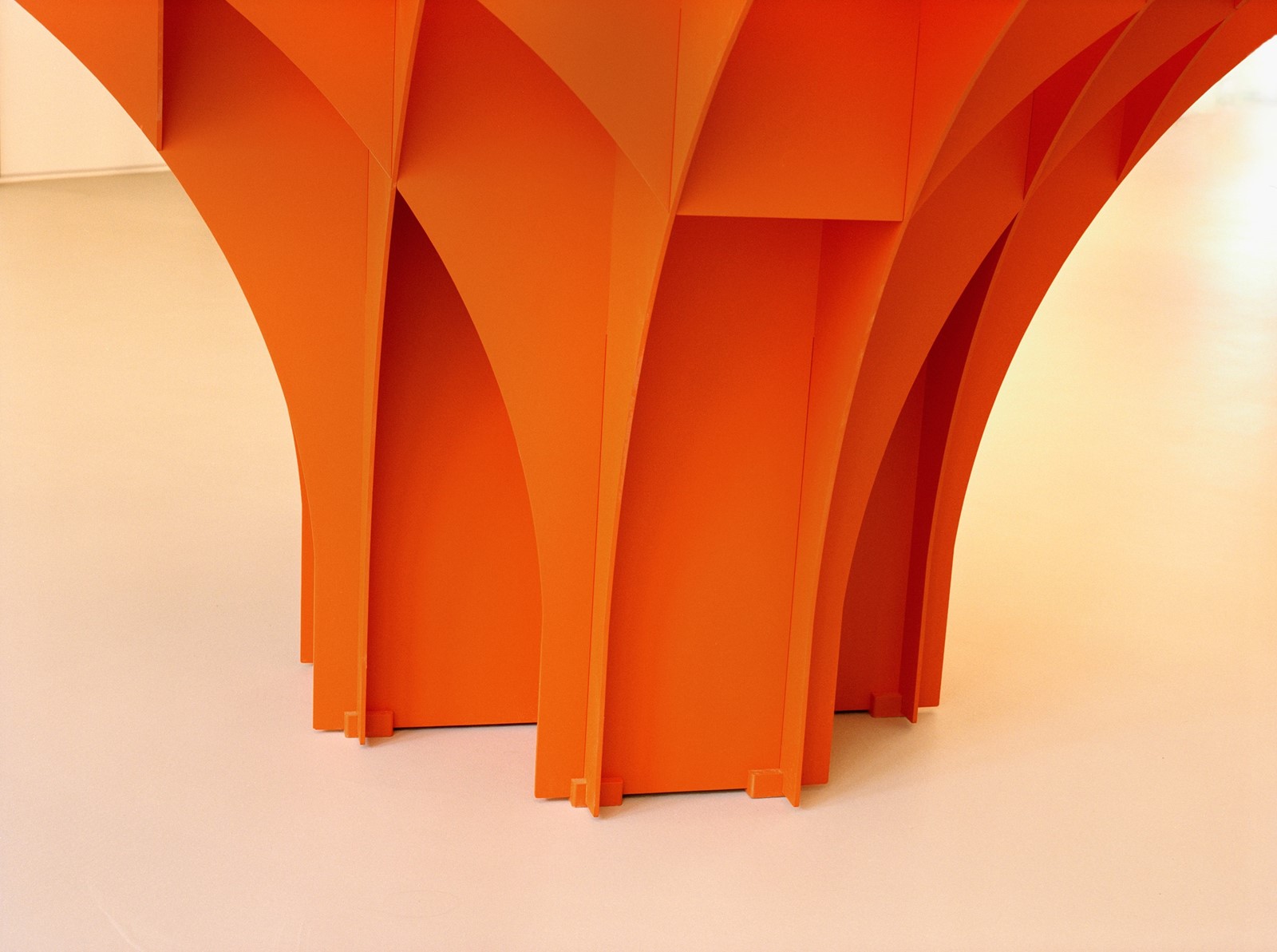
Both the Alaïa store and the Alaïa exhibition set the couturier’s work against museum-quality design pieces. The latter features screens inspired by the cutwork mashrabiya screens of Arabian architecture, all specially created by an array of Alaïa’s friends – both admirers of him, and talent he in turn admired. The effect is awe-inspiring, chopping up the Design Museum into intimate enclaves for consideration of the couture at hand. The store, by contrast, feels like home: each piece was chosen by Alaïa himself – curated is the incorrect term, as there is a hardy usefulness to every piece. The store isn’t awe-inspiring as much as inviting, allowing clients to browse from floor to floor with ease via a curling spiral staircase by the artist Kris Ruhs. Ruhs also designed a light cascade, like waterfall of serrated metal, that trickles through all three floors – reminiscent of jewellery pieces created for Alaïa’s couture collections (including the metallic straps used on belts and handbags composed of an abstracted letter ‘A’ interlinked into angular, serpentine chains).
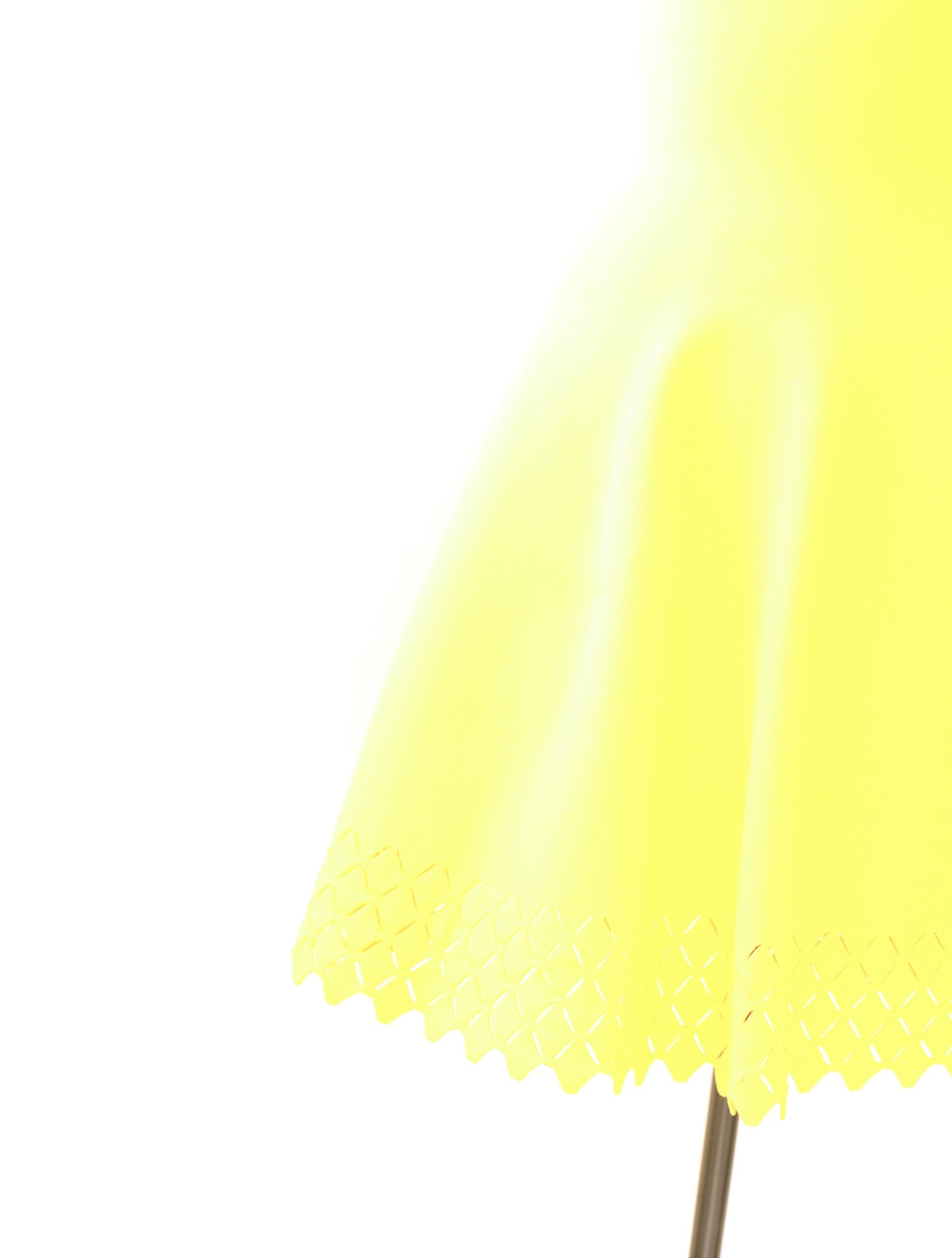
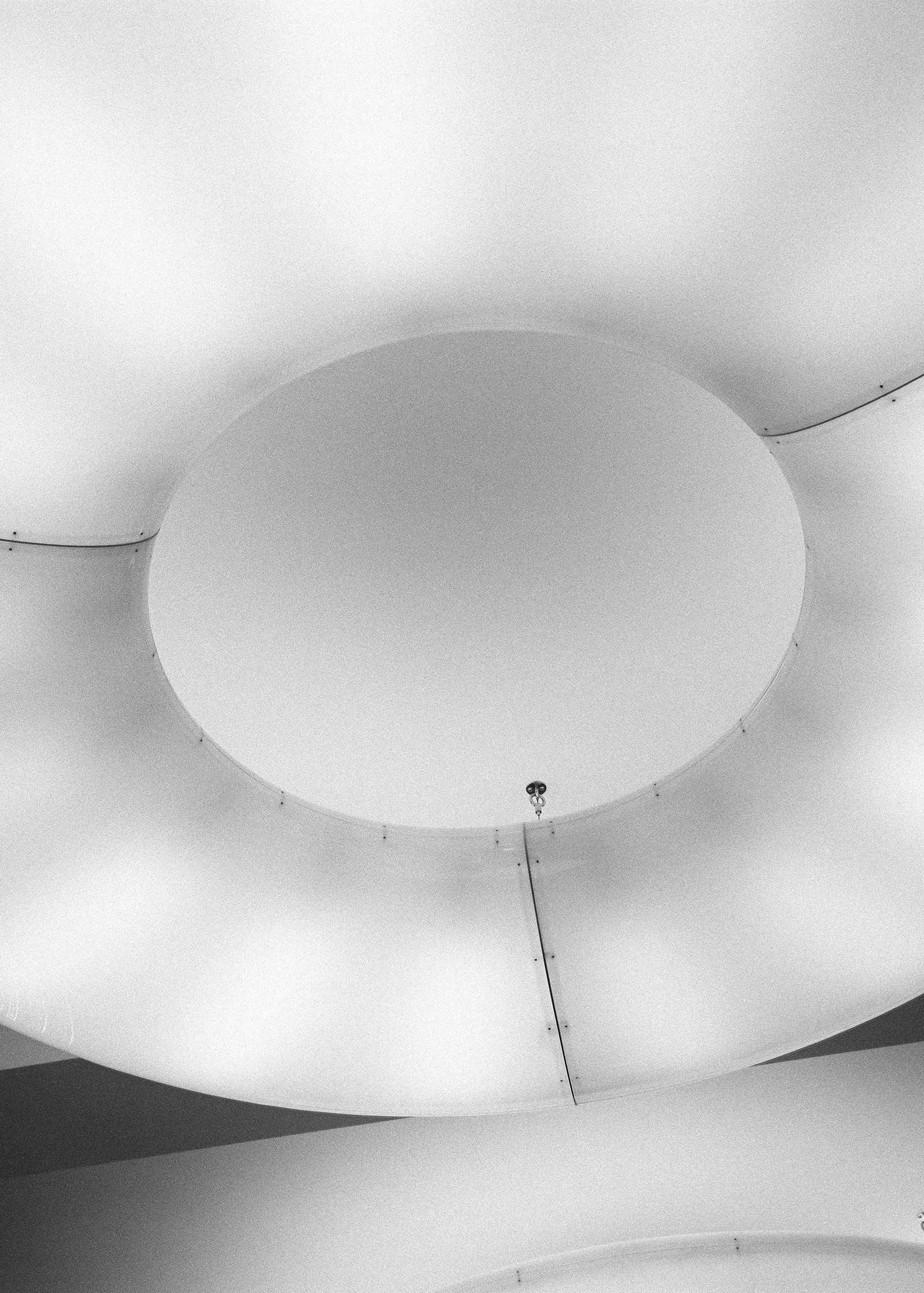
Light is a vital idea. The space is bathed in the stuff, shelves and benches created from glass or plexiglass to prove no obstacle and cast no shadow. They are designs by Renzo Piano, Shiro Kuramata and Naoto Fukasawa. “He wanted everything to be transparent and full of light, so he looked for pieces that looked like they were just floating,” states Sozzani. That included new talents – Alaïa saw a bench by the Japanese designer Tokujin Yoshioka at the Musée d’Orsay and commissioned him to create a glass bench, and a number of pieces for the space. Marc Newson’s Pelota lamps – bought in bulk by Alaïa in 2001, and in storage for a decade – hover like UFOs over the third floor ‘couture’ salon; while the soft furnishing of Pierre Paulin punctuate the space with plushy, lush spots of high colour. The chair F050 – originally a feature of Paulin’s own bedroom, where two sat – is reproduced here for the first time. “We are very close to [Pierre’s son] Benjamin Paulin,” said Sozzani. “So we asked him to remake.” And he did, along with the squat stools and squidgy, saucisson-style sofas. Their rich, saturated colours – redolent of the 60s and 70s, when they were designed – are picked up in Alaïa’s clothes, some of his final creations in brilliant hues of lipstick red, sulphuric yellow and hazmat orange. Their availability – to touch, to try, to buy – also prevents this shrine to design from feeling cold, or museum like. Instead it feels idiosyncratic, original. Just like the man himself.
The Maison Alaïa London store is open now, at 139 New Bond Street, London. Azzedine Alaïa: The Couturier runs at the Design Museum, London from May 10 – October 7, 2018.
